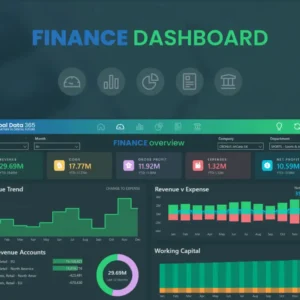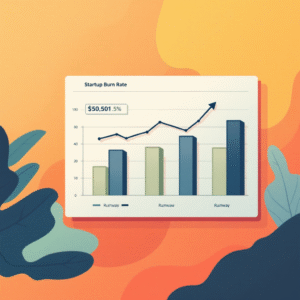Introduction
In today’s data-driven world, businesses need tools that convert vast amounts of information into clear, actionable insights. Power BI’s Key Influencers visual is an invaluable asset for understanding which factors most significantly affect key metrics—whether it’s sales, customer retention, or employee satisfaction. Leveraging Microsoft’s AI, Key Influencers highlights the top variables impacting specific outcomes, allowing organizations to make informed, strategic decisions quickly.
Designed for both technical and non-technical users, Key Influencers simplifies complex data relationships and brings to light the underlying drivers of performance. This visual makes advanced analytics accessible, helping users uncover trends, validate hypotheses, and prioritize actions based on statistically supported insights.
This guide explores how to harness Power BI Key Influencers effectively, from setting up the visual to interpreting its outputs. By understanding and applying insights gained from Key Influencers, you can pinpoint and address the most impactful areas of your business. Whether you’re analyzing customer behavior, optimizing product offerings, or improving employee engagement, Key Influencers equips you with the knowledge needed to make data-backed decisions that drive success.
What Are Power BI Key Influencers?
The Key Influencers visual in Power BI is an AI-driven tool that highlights which variables most impact a specific target metric, making it valuable for exploring relationships within your data. By analyzing both a dependent variable (like sales performance) and independent variables (such as region, product category, or customer demographics), Key Influencers helps businesses identify key drivers behind their data trends.
For instance, imagine an online retailer wanting to understand why certain products perform better in specific regions. With Key Influencers, they can analyze factors like customer demographics, promotion timing, and competitor pricing to see what impacts sales the most in those areas. This analysis reveals not only what drives sales but also helps the retailer prioritize actionable strategies—such as targeting specific regions during high-promotion periods.
The power of Key Influencers lies in its accessibility; it’s useful for both technical and non-technical users, transforming complex statistical analysis into straightforward insights. It visualizes the influence of different factors on target outcomes, ranks them by importance, and provides a clear pathway to make data-driven decisions. Whether a business is focusing on customer retention, product optimization, or market expansion, Key Influencers makes it easy to unlock meaningful insights from data without requiring a deep background in statistics.
Why Key Influencers Matter in Data Analysis
The Key Influencers visual in Power BI goes beyond traditional data visualizations, acting as a bridge to effective, data-driven decision-making. Leveraging AI to analyze and rank the factors influencing a target metric, this tool provides a unique combination of accessibility and analytical depth, making it invaluable for business leaders and analysts alike. Here’s why Key Influencers is a game-changer for organizations:
- Data-Driven Decision Making
One of the most impactful aspects of Key Influencers is its ability to replace guesswork with statistically validated insights. Rather than relying on intuition, businesses can make informed decisions supported by data analysis, which strengthens confidence in the actions they take.
o Eliminates Guesswork: Key Influencers helps businesses understand what really drives their target outcomes, such as sales, customer satisfaction, or operational efficiency. By identifying and ranking the most impactful factors, it empowers decision-makers to act on insights with confidence, grounded in statistical validation. For example, a business analyzing customer satisfaction may discover that response time to customer queries is a primary driver of satisfaction, leading to more targeted improvements.
o Action Prioritization: Key Influencers is particularly valuable because it doesn’t just identify factors; it ranks them according to their relative importance, allowing organizations to prioritize actions that yield the highest return on investment (ROI). By focusing on the top influencing factors, businesses can allocate resources more effectively. A sales team, for instance, could use Key Influencers to tailor regional promotions based on variables that drive sales in each location, such as customer demographics or seasonality, maximizing the impact of each campaign.
- Time Efficiency
The Key Influencers visual automates much of the statistical work involved in data analysis, which can save considerable time and reduce the labor-intensive nature of hypothesis testing.
o Automated Statistical Analysis: Traditional statistical analysis often involves manually testing various hypotheses to identify which variables are most influential. Key Influencers simplifies this process by automatically calculating and ranking the strength of influencing factors, eliminating the need for time-consuming manual analysis. This automation allows analysts to focus on interpreting results and applying insights rather than spending time on complex calculations.
o Quick Pattern Identification: Key Influencers makes it easy to identify significant patterns and anomalies in data, allowing businesses to detect trends and respond faster to changes in market conditions. Quick identification of patterns can be critical in competitive industries where timely action is crucial. For instance, a company in retail could use Key Influencers to identify emerging shopping trends and adjust inventory or marketing strategies accordingly, staying ahead of competitors.
- Accessible Advanced Analytics
Key Influencers makes advanced analytics accessible to non-technical users, breaking down barriers and enabling a data-driven culture across departments.
o User-Friendly Interface: Key Influencers transforms complex statistical analysis into easy-to-understand visuals and recommendations. Non-technical users can navigate the visual, explore the ranked influencers, and interpret the findings without needing a background in data science or statistics. This accessibility empowers a broader range of team members to engage with data analysis, fostering a data-literate workforce.
o Cross-Departmental Collaboration: Insights derived from Key Influencers are beneficial across departments, allowing different teams to leverage data-driven findings for their specific functions. Sales, marketing, human resources, and operations can all benefit from the visual, using insights to guide decisions that align with overall business goals. For example, marketing teams can use insights about customer preferences to fine-tune campaigns, while HR can identify factors impacting employee satisfaction and take steps to improve retention. This shared access to analytics promotes a unified approach to data and enhances collaboration across the organization.
Example Use Cases
Consider a few examples that illustrate the practical application of Key Influencers:
o Sales Optimization: Imagine a company analyzing why certain products sell better in specific regions. By examining factors like customer demographics, promotion timing, and competitor pricing, Key Influencers can reveal which factors have the strongest influence on sales. The sales team can then focus on these variables to tailor promotions and improve performance in each region.
o Customer Retention: A subscription-based business might use Key Influencers to analyze which factors contribute most to customer churn. By identifying top influencers such as service quality, price sensitivity, or engagement levels, the business can proactively address these areas, implementing loyalty programs or service improvements to retain more customers.
o Employee Satisfaction: HR departments can use Key Influencers to determine the drivers of employee satisfaction within the organization. By analyzing factors like workload, management style, and career growth opportunities, HR can focus on the areas that matter most to employees and improve overall workplace satisfaction and retention.
Setting Up Key Influencers Analysis
Data Preparation
Effective use of the Key Influencers visual in Power BI begins with thorough data preparation. Quality data is the foundation of reliable insights, so ensuring your dataset is ready for analysis is essential. Here’s a guide to preparing your data for Key Influencers analysis.
- Data Quality
Before diving into any analysis, it’s essential to ensure that your dataset meets high-quality standards. Power BI’s Key Influencers visual relies on clean, consistent data to produce meaningful insights, so data quality issues can lead to skewed results and misinterpretation.
o Clean Data: Verify that your dataset is free of errors, duplicates, or incorrect values. Cleaning your data involves identifying and addressing inaccuracies, ensuring there are no outliers or inconsistencies that could distort your analysis. For instance, if you’re working with an e-commerce dataset that includes customer demographics, purchase history, and product ratings, check that each entry is valid and properly aligned with the corresponding customer information.
o Consistent Formatting: Data consistency is key to smooth analysis. Standardize formats across fields, such as date, currency, or measurement units, to prevent analysis errors. If analyzing customer data, make sure that information such as date formats, age groups, and regions follow a consistent structure. Unified formatting minimizes discrepancies and helps Power BI interpret your data accurately.
o Minimal Missing Values: Missing values can compromise analysis accuracy. Aim to fill in missing data where possible, or exclude fields with excessive gaps. For essential fields with a few missing values, consider data imputation methods, such as replacing missing values with the mean or median, to keep the dataset complete without introducing bias.
- Variable Types
Identifying the correct variable types is crucial for meaningful Key Influencers analysis, as Power BI categorizes these variables to evaluate their impact on a target metric effectively.
o Target Metric: Choose a specific metric to analyze, such as customer satisfaction, monthly revenue, or product ratings. This metric should represent the outcome you aim to understand or improve. Having a clear target metric allows Key Influencers to identify factors that significantly affect it, helping you draw actionable insights.
o Potential Influencing Factors: Identify variables likely to impact the target metric. For example, if analyzing monthly revenue, potential influencing factors might include product category, age group, and region. Selecting relevant factors ensures that Power BI can reveal the most impactful variables, providing insights into areas with potential for improvement.
o Data Types: Verify that each variable is in the correct format for analysis, such as numeric, categorical, or text. Numeric fields are suitable for metrics like revenue or product ratings, while categorical fields work well for factors like product category or region. Ensuring accurate data types prevents errors and optimizes Key Influencers’ ability to calculate and interpret relationships in your data.
Step-by-Step Configuration
Once your data is prepared, you can proceed with setting up the Key Influencers visual in Power BI. This setup involves selecting the visual, configuring analysis fields, and defining aggregation methods to suit your data’s needs.
- Select the Key Influencers Visual
To start, add the Key Influencers visual to your Power BI report canvas.
- Visualizations Pane: In the Power BI interface, go to the Visualizations pane and locate the Key Influencers icon (represented by a symbol with an arrow and lines). Click and drag it onto your report canvas to initiate the setup.
- Resize and Position: Resize and position the Key Influencers visual as desired on your canvas, so it’s easy to view alongside other report elements or visuals.
- Configure Analysis Fields
Setting up your analysis fields is the core of Key Influencers configuration, as it defines the target metric and factors Power BI will evaluate.
o Target Metric: Start by selecting the metric you want to analyze, such as monthly revenue, customer satisfaction, or total sales. Drag this field to the “Analyze” section within the Key Influencers visual. This step ensures that Power BI knows which outcome to focus on when determining influential factors.
o Influencing Factors: Next, add the fields you believe influence the target metric. These fields can include categorical variables like product category, region, or season, as well as continuous variables like advertising spend or customer tenure. Drag these fields to the “Explain By” section of the Key Influencers visual, allowing Power BI to evaluate their impact on the target metric.
o Aggregation Methods: For metrics that require aggregation (e.g., total sales or average customer rating), configure the aggregation method to align with the type of metric. Power BI offers several aggregation options, such as sum, average, and count, enabling you to calculate totals or averages that make sense for the analysis. For example, if your target metric is monthly revenue, selecting sum will provide a cumulative total, while average would be appropriate for customer satisfaction scores.
Understanding Key Influencers Results
Interpreting the Visual
The Key Influencers visual presents two main views:
- Key Influencers View
- Shows a ranked list of the most influential factors on the target metric, alongside impact scores that quantify the relative strength of each factor.
- Top Segments View
- Identifies groups within the dataset with similar attributes, enabling targeted comparative analysis. This is particularly useful for uncovering unique patterns among specific segments.
Statistical Metrics
- Impact Scores
- Each influencer’s impact score quantifies its importance relative to the target metric. For example, a score of +15% for “promotion period” on revenue means that periods with promotions have 15% higher revenue on average.
- Confidence Levels
- Indicates statistical reliability, showing how certain the model is of each influencer’s impact. For instance, a high confidence level on “customer age” impacting retention provides greater trust in this variable as a factor to consider in future strategies.
Advanced Features and Techniques
Dynamic Analysis
- Real-Time Updates
- Power BI supports real-time data connections, meaning the Key Influencers visual recalculates and updates as new data flows in.
- Cross-Filtering
- Cross-filtering synchronizes the Key Influencers visual with other report visuals, allowing users to filter data contextually. For example, filtering for a specific month updates Key Influencers to show factors most relevant to that timeframe.
Custom Analysis Settings
- Threshold Adjustments
- Users can adjust significance levels, minimum sample sizes, and impact thresholds to refine insights. Increasing thresholds might help prioritize only the most impactful variables.
- Visualization Options
- Customizing color schemes, display preferences, and layout provides a user-friendly experience, aiding in quicker insight comprehension.
Best Practices for Key Influencers Analysis
Data Considerations
- Sample Size Requirements
- Ensure you have enough data points for reliable results. A dataset with thousands of sales records, rather than dozens, provides higher statistical significance.
- Variable Selection
- Choose variables relevant to your target metric to avoid noise in the analysis. For example, avoid including both “age” and “age group” as they convey overlapping information.
Analysis Approach
- Iterative Analysis
- Begin with broad factors and progressively refine them. Try analyzing customer behavior in different regions, then narrow down to explore product-specific drivers.
- Business Context
- Incorporate business expertise to validate findings. For example, aligning retail sales data with marketing campaign timings helps ensure insights are actionable.
Common Challenges and Solutions
Technical Challenges
- Performance Issues
- Large datasets can slow performance. Optimize data models by summarizing data where possible and using filters.
- Data Quality Problems
- Ensure minimal missing values, handle outliers, and apply data transformation techniques to prepare for analysis. For example, segmenting high-value customers in datasets that lack purchase history requires accurate data enrichment.
Analytical Challenges
- Interpretation Complexities
- Key Influencers highlights correlations, not causations. Avoid over-attributing outcomes to influencing factors without confirming causation through other methods.
- Business Application
- Translate insights into specific actions. For instance, if “seasonality” influences high-end product sales, consider increasing stock during peak seasons and promoting seasonal discounts.
Real-World Applications
Business Scenarios
- Sales Analysis
- Identify factors impacting customer behavior, such as promotions, demographic patterns, and competitive pricing.
- Customer Retention
- Explore factors driving customer satisfaction and churn to develop better loyalty programs.
Industry Examples
- Retail
- Key Influencers can uncover purchase patterns, aiding in optimizing stock levels, pricing strategies, and seasonal campaigns.
- Healthcare
- Analyze factors influencing patient outcomes or resource utilization, contributing to more efficient treatment strategies.
- Manufacturing
- Factors like production line speed, machine health, and quality of materials can be analyzed to improve output quality and operational efficiency.
Future of Key Influencers in Power BI
- Enhanced AI Capabilities
- Anticipate improvements in natural language processing, enabling Key Influencers to answer questions conversationally or offer predictive analytics directly.
- Industry Trends
- Expect augmented analytics to become the norm, with AI-driven insights and custom visuals increasingly integral to business intelligence.
Tips for Maximum Impact
- Performance Tuning
- Optimize the performance of your report by refining queries, reducing dataset size, and minimizing visual elements that can cause latency.
- Storytelling with Data
- Contextualize insights with clear, narrative-driven reports. For instance, summarize findings for executives in an “insight dashboard” and include actionable recommendations for each influencer.
Conclusion
Power BI Key Influencers is a robust tool that democratizes advanced data analysis, enabling businesses to uncover the factors that most influence their key metrics and make data-driven decisions with confidence. This visual not only identifies impactful variables but also ranks them in terms of their relative influence, helping users prioritize actions effectively. Whether you’re assessing customer satisfaction, sales performance, or operational efficiency, Key Influencers transforms complex relationships into clear, actionable insights.
Following the best practices and guidelines in this guide allows you to harness Key Influencers’ full potential. Preparing clean data, selecting relevant variables, and interpreting results accurately are key steps in deriving meaningful insights. For example, identifying which customer demographics are most influenced by specific product features enables targeted marketing strategies, while uncovering the primary factors affecting employee retention can guide policy improvements.
As Microsoft continues to advance AI capabilities in Power BI, the functionality of Key Influencers will only expand, offering even deeper insights and predictive analytics. For non-technical users, this tool presents a unique opportunity to perform sophisticated analysis without the need for statistical expertise, democratizing data analysis across teams.
Integrating Key Influencers into your analytics strategy is essential for staying competitive in today’s data-driven business environment. This tool not only saves time by automating parts of the analysis process but also fosters a data culture where decisions are backed by measurable, impactful insights. By mastering Key Influencers, you’re equipping your organization to make smarter, faster, and more effective decisions that drive real value.
Engaging Question for Readers
What has been your most surprising discovery using Power BI Key Influencers, and how has it impacted your decision-making?







